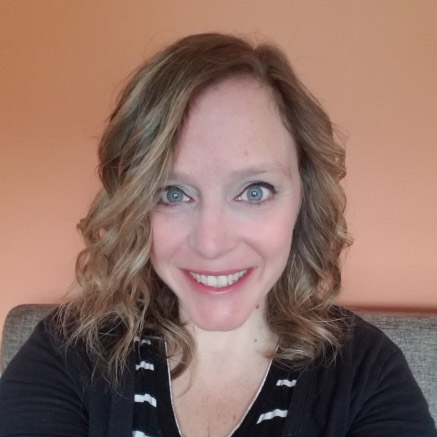A common assumption that I have heard over and over in my clinic is: “My hand hurts, I’m pretty sure I have Carpal Tunnel Syndrome.” One thing that we commonly do as human beings is “lump” our problems into categories of diagnoses that we have heard before (usually the same diagnoses that our family member or friend have had). For example, all of our hand problems tend to be diagnosed as Carpal Tunnel Syndrome, all of our elbow problems tend to be diagnosed as tennis elbow and all of our shoulder problems tend to be diagnosed as tendonitis.
The mission of today’s blog is to debunk the thought that every problem in the hand is Carpal Tunnel Syndrome. We are going to dig a little deep today and compare Carpal Tunnel Syndrome with a more unfamiliar diagnosis, de Quervain’s Tenosynovitis. Let us start with Carpal Tunnel Syndrome.
Carpal Tunnel Syndrome (CTS) is a compression of the median nerve at the level of the wrist, palm side. Carpal Tunnel Syndrome is not contagious or genetic, it is a musculoskeletal disorder. A musculoskeletal disorder is a condition that affects your muscles, bones or joints. Yes, CTS can be caused by other factors, such as pregnancy or trauma, for example, but for simplicity sake, we will focus on the most common cause. Carpal Tunnel Syndrome is most commonly caused by chronic repetition of the wrist and fingers in a bent position. It is seen frequently in patient’s that work in factory settings. These patients are completing repetitive work activities on a line, daily. It is also commonly seen in occupations such as mechanics, agricultural workers, and truck drivers.
Comparatively, de Quervain’s tenosynovitis is an inflammation of the tendons at your wrist/ thumb region. A tendon is what connects a muscle to a bone. Multiple tendons run throughout your wrist. The tendons that get inflamed in de Quervain’s tenosynovitis are specific to the thumb side of the wrist, right at the base of your thumb. Like CTS, de Quervain’s is also a musculoskeletal disorder and can have multiple different causes. Some common examples include gardening, gaming, sports that involve a racquet, and jobs that involve repetitive work tasks. Rheumatoid Arthritis (RA) can also cause symptoms of de Quevain’s tenosynovitis.
Symptoms of CTS and de Quervain’s tenosynovitis are similar in nature. Symptoms of pain can vary depending on the severity of the condition. In both cases, patients can feel chronic pain at rest or no pain at rest. Sometimes pain is intermittent with movement, other times it is constant with movement. Everyone is different. However, with CTS, pain and numbness is commonly present at night. Pain almost always increases with repetitive activity in both CTS and de Quervain’s tenosynovitis. Swelling in the wrist is also a common symptom of both diagnoses. However, unlike de Quervains’ tenosynovitis, sensations of numbness and tingling is a distinguished symptom in CTS. You will feel this sensation in the thumb, index finger, middle finger and (half) of your ring finger mostly on the palmer side of your hand. Both diagnoses are also typically accompanied by weakness.
Treatment of CTS and de Quervains’ tenosynovitis is similar but different. Conservatively, they both typically respond well to Occupational Therapy. One of the most effective treatments for both diagnoses is splinting. Splinting immobilizes your wrist and allows for proper rest and healing. Here is where it is important to listen. In this case (and several others), one splint does NOT fit all. Carpal Tunnel Syndrome and de Quervains’ tenosynovitis splints are very different. Remember, the area of the wrist/hand affected is different, so they must be splinted differently. Both CTS and de Quervains’ tenosynovitis responds well to manual stretching; however, they are stretched differently. Weakness usually accompanies both diagnoses, so when appropriate, strengthening programs are utilized. Both CTS and de Quervains’ tenosynovitis responds well to modalities such as heat or cold. Unlike de Quervains’ tenosynovitis, CTS has a nerve that is being compressed. So additional nerve gliding exercises are utilized with the treatment of CTS.
If conservative treatments do not work, your doctor may give you anti-inflammatory drugs or steroid shots to reduce the swelling and pain. Surgery is also an option if the aforementioned conservative treatment techniques fail to reduce your symptoms.
Remember, no matter what the treatment, both CTS and de Quervains’ tenosynovitis are conditions most commonly created by repetitious activities. It is very important to change or modify our lifestyle if we do not want to experience either one of these diagnoses again.
Hopefully, this helps you clarify the difference between CTS and de Quervains’ tenosynovitis, but most importantly, helps you recognize that not every hand problem is the same. There are multiple things that could be happening to your hands and the best thing you can do for yourself is to get it checked out by your PCP or your local Occupational Therapist BEFORE the symptoms become unbearable. Your best chance of a successful recovery is addressing the problem quickly before conservative treatments are not effective.
Our hands are precious tools that our body has given us. It is so important to not overuse them because we need them to work effectively for so many crucial things in our lives. You only have two. Take one away and you will be astonished how dramatically your life will change.
Always remember: Take care of your hands. Protect your hands. Rest your hands. They are the only two you’ve got.
Amy Livengood, OTR/L, CEAS II, Director of Occupational Therapy

Recent Posts:
